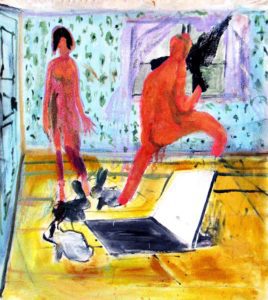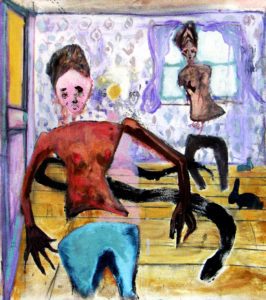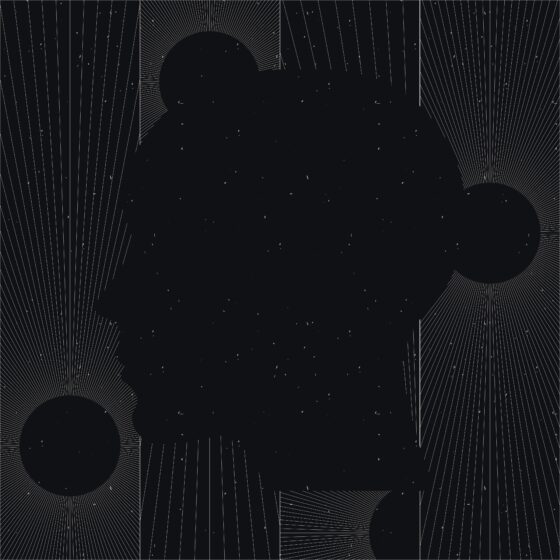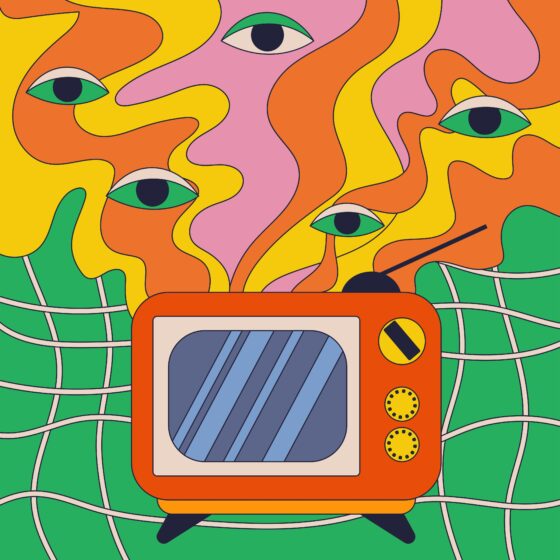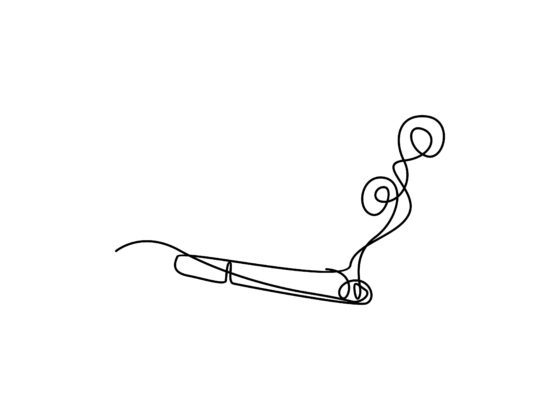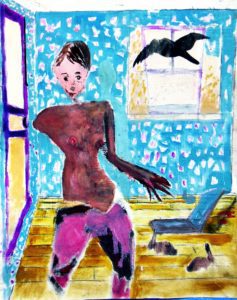
I was folding laundry beside the hot woodstove in my living room on a frigid January afternoon when a friend called me, her voice seething with fury. Susan, a trustee at the one-room rural Vermont library where I worked, had discovered an intruder during closing hours at the public computer station. The intruder had fled through the back door. Susan called the police, and then dialed me.
A year prior, a lingering whiff of cigarette smoke had greeted me on Monday mornings when I opened the library. New to the job, I dug for gossip around the village and connected pieces of rumor. Someone had been breaking into the library on weekends to hang out and chain-smoke. The man was in his mid-thirties, on the shady side of the law, lived with his parents off and on, and jumped from job to job. He didn’t have a driver’s license or a car registration. Sometimes, after arguing with his father, he slept in his truck in the village post office parking lot. Local gossip claimed he was a heroin user.
Eventually, the police arrested the intruder after his photo was snapped on a hidden camera. The state’s attorney bungled the case, and charges were dropped. No sign of footprints in the snow or scent of cigarette smoke had reappeared. But now, it seemed, he was back.
I hung up the phone, raced my silver Toyota the few miles to the library, and parked in the empty lot. The late afternoon was so cold that snow squeaked under my boot soles.
In the library, Susan slumped against my desk, her anger drained, staring at clumps of snow we had tracked in on the carpet. She wouldn’t look at me.
Susan’s husband, a volunteer town firefighter, told me that minutes before, news had come over the rescue scanner that the intruder had shot himself in his parents’ house.
“What?” I said aloud. “He shot himself over this?”
The library was overly bright with florescent lights in the dusky late afternoon.
A sudden wind banged open the door. I kept turning my knitted hat around and around in my hands, asking, “What happened?”
The fire chief confirmed the man’s death. I drove home in the dark.
Recently divorced, I was cobbling my household together with two jobs and was perpetually tired. I pulled into my driveway, got out of my car, and stood there. Two thousand miles away, my daughters’ father was protesting the North Dakota pipeline, his exact whereabouts unknown. Through my house’s windows, I saw my daughters at our dining room table, eating barbecued chicken wings and talking. Their fingers and lips glistened with grease. It was just after the holidays, and the girls had switched on our Christmas tree’s colored lights. We had hung white lights on the dining room walls, and these electric strings twinkled through the windows’ glass.
I gazed up at the dark sky, the mute Milky Way a gossamer arc through the ebony night. I had a terrible feeling that I had done something irreparable. I went into the house, sat down at the table with my daughters, and cried.
***
The truth is that the rumors that the intruder was a heroin user had mattered to me. If a woman with a small child had slunk into those book-lined rooms, I might have offered aid—a sympathetic ear or a referral to an agency or church group for help. Instead, I had seen only a Heroin User, not a neighbor. I had done everything I could to keep this stranger out of the library. After the hidden camera had snapped that photo, I kept calling the state’s attorney’s office, pressing for a court date and offering to give testimony. The library was built on school property, and I repeatedly mentioned that the small building was surrounded by a playground and community garden—although I lacked even an iota of evidence that the children had ever seen the intruder slip in. My actions displayed the essence of stigma: I saw the addiction and not the person.
Worse, I knew addiction well myself. I had struggled fiercely with alcoholism. I had then been sober for nearly a decade but had never spoken about my struggles—neither publicly, nor to my closest friends. It was a secret I intended to keep buried. This neighbor, however, was a drug user—an addict!—while I only had a drinking problem.
If I had still been a drinker, I would have numbed myself the night of his suicide, gone into work the next morning, and that would have been it. But my drinking days were in the past. I was a writer as well as a librarian, and over the next few months, I drafted an essay about the experience to help myself understand what had happened. I soon realized the scope of what I wanted to write about was beyond the snapshot of a feature. I envisioned a book that layered opioid abuse against the backdrop of small town, rural Vermont. The “opioid crisis” had come banging at my door, and I believed my role would be to illuminate its dark secrets. I wanted to understand everything I could about opioid addiction: Why is this such an epidemic now? Who becomes addicted? And why? Methodically, I lined up the pieces of my book, Unstitched. I secured two small state-funded grants. Steerforth Press bought my unwritten book based on a proposal and two chapters.
Almost at once, my writing plans hit a snag. I interviewed a woman who worked in prevention. We met in my library on a Saturday afternoon. Michelle Salvador is a single parent, too, and we shared gripes about the challenges of mothering and working. As we started talking in earnest, Michelle switched up our conversation. The problem, she said, isn’t opioids. The problem is addiction. I had propped open the door with a rock to let in the warm spring air. In the sandbox outside the library, a little girl with two braids dug intently with a red plastic shovel. I tried to direct Michelle back to data about opioids, but she steered me towards meth and marijuana and how Vermont normalized drinking. The data shows, she said, if you start using intoxicants before age fifteen, you’re much more likely to develop a serious addiction.
I liked Michelle immediately; she was personable and funny, and I appreciated the parenting connection. But as she spoke, I kept thinking, She’s wrong. The problem is opioids. After she left, I closed the library door and packed up my things to head home. I glanced at the lines I had scrawled in my notebook:
Addiction as whole — the problem.
Early usage — before age 15.
Risk factors — genetics, trauma.
I closed my notebook and held it in my hand. The book’s cover was dandelion yellow. When I was twelve, my parents had poured me a glass of wine every night at dinner. Wine was a constant in their house, in endless amounts, and that one glass could easily become a glass and a half, or two, or simply flow uncounted and unreckoned. In my parents’ household, drinking was the rite of passage into adulthood, cherished and celebrated. I am a white woman, born in 20th century America, middle-class and college educated, factors that shaped the woman I became but drinking had shaped my life—and my daughters’ lives—just as profoundly, if not more so. Our family life was built on the festering secrets of addiction, guilt, and shame. I hadn’t been drunk in eight years, but I felt hungover, sour, and heartsick.
***
I wanted to write about opioids because I didn’t have an opioid problem. I intended to refer only fleetingly to my past in the book; I had experience with addiction and so, by extension, knew what I was talking about. What I didn’t want to write about was my miserable slog to sobriety—that I had tried to quit and failed for years before I finally strong-armed my own demon. I had never admitted even to my best friend that my demon was alcohol. My public librarian façade covered my shame. I had concealed that secret well, and I had no intention of unveiling my sordid past.
As it had for so many others, addiction had crept up on me insidiously. Those family dinner glasses of wine extended into college drinking, and those habits continued into my adult life, too. I ceased drinking entirely while I was pregnant and mothering a baby. Yet my passion for alcohol bubbled up again, intensifying as the pressures of parenting and our family carpentry and maple sugaring business vised around me. I developed strict rules for myself around alcohol consumption, and I rewrote them constantly: “Never drink after dinner” slipped into “Never drink before five.” A limit of two drinks a day slid into four, and then I stopped counting. Alcohol morphed into an awful secret between my husband and me—a fierce fight in our house, but never mentioned, ever, anywhere else.
I tried little tricks to quit drinking: Empty a wine bottle into two mason jars and hide one mason jar in the woods to save it for the next day (I walked out in the dark to reclaim that jar, tipped it up, and drank), buy smaller bottles of wine (and drank more of those), drink only one beer a day (failure). Looking back through my journals now, I see copious lists that run the gamut from applying for a USDA grant for sugaring equipment to planning children’s birthday parties. Sandwiched in these lines, the letter D appears repeatedly. Just that—“D” followed by a period. Only I knew that the D meant Deal with your Drinking, an ever-present and unresolved worry.
In my forties, by chance, I picked up a book from a tiny free library, a wooden box on a post on the town trail system. The book was The Power of Habit, by Charles Duhigg. While reading the chapter about Alcoholics Anonymous, a syllogism flashed into my awareness. Drinking was my daily habit; I could break that habit. I could rewrite my life. Writing this connection seems idiotically simple—well, duh, of course. Duhigg wrote about people who, supported by AA, had acknowledged their habits and changed their lives. Desperate to quit, I followed his advice and set a goal for myself of not drinking just for one day. What if I mastered one day and that day led to a second day? Maybe a third day? Maybe a whole week? The change was this: For the first time, I began to believe that a sober life might be possible for me.
In hindsight, I realize that possibility had always existed, even though I hadn’t seen it. But acknowledging the path wasn’t enough. I had to take that proverbial leap of faith that I could live a sober life. That jump seemed, honestly, implausible for me. Yet, when I saw the flash of possibility, I took the chance.
I drank my last glass of wine in the bedroom I then still shared with my husband.
I had just returned with my youngest daughter from her ballet class, and I hurried upstairs to swallow white wine before cooking dinner. Standing in our bedroom, I heard my daughters’ voices downstairs, their words blurred by the walls. I wanted so much to be in the kitchen with them. I gulped the final dregs and hid the glass in a pile of my folded t-shirts on a closet shelf. I didn’t go back upstairs until I lay down to sleep that night.
The next morning, I reiterated silently that I would not drink that day. I forced myself not to worry about the rest of my life, or next month, or even tomorrow. I resolved not to drink for that one day; nothing else held any importance. For years, I had slunk upstairs and imbibed in the bedroom. Now, there was no wine in the house. After dinner, I sat on the couch with my daughters and didn’t get up. It was early December, and night blanketed our house early. I knitted yellow and orange mittens in the shape of goldfish. We played Yahtzee. I feared I would fail at this try, too, so I kept at it unannounced, day by day, with not a word to anyone.
I endured one sober night, then two sober nights, then a hard-fought week. Three months in, I was still sober. Every morning, I repeated to myself that my one goal for the day was to go to sleep sober that night. Would my life ever move beyond this day-by-day question, I wondered?
***
Still researching Unstitched, I interviewed Katie Whitaker, a nurse at the local health center who was enmeshed in the center’s recovery program. Warm and enthusiastic, she recommended books I should read and suggested local people she knew who could help me understand addiction. Katie urged me to meet Meg Goulet, a recovering opioid user, who shared her story in workshops and trainings. I followed up, and Meg agreed to an interview.
When we met at the Recovery Center where she works, Meg began by saying she had three titanium plates in her head and thirteen screws from a car accident when she was a teenager. She immediately revealed a surgeon’s skill and shiny titanium parts had mended her skull and eye socket. Meg’s addiction had forced her to relinquish custody of her first baby. Now, years into her recovery, she was a certified Recovery Coach, married, mother to two more children, and had mended the relationship with her firstborn.
Afterward, I stood outside the Center. In the humid summer afternoon, towering thunderheads bunched over the village’s brick buildings. Down a steep embankment, the Lamoille River flowed through its oxbow curves, unperturbed. A breeze whooshed up, stinging my eyes with gritty sand. I had never intended to be an alcoholic, to spend years drinking and hating it, when I might have been writing. But how much in life do we really choose? How much in life is merely drift, until we begin to take the rudder of our own small lives and try to navigate through the current of our circumstances?
The clouds burst, and I ran for my car. As I waited for the showers to pass, I watched a woman with a yellow umbrella run from her station wagon to the Center. She stopped beneath the door’s overhang, shook out her umbrella, and closed it. Then she stretched her hand into the downpour, palm up, as if collecting a handful of rain. It was nothing more than the summer storm, but I suddenly realized that recovery—my recovery—would endure. I couldn’t be afraid forever; I had to reach out beyond myself. Getting sober was one leg of this journey, not the destination. Later that summer, Sam McDowell, a former heroin user, would tell me that quitting drinking and using is important, but that’s only the beginning. The greater challenges are what you do with your recovery.
***
The hardest part to write in Unstitched was the scene where, drunk, I burned my four-year-old daughter’s dolls. How fiercely I resisted stripping off that public persona of town librarian and revealing my own shameful struggles. Once I had written it, however, and once it had been irretrievably woven into the book’s narrative, I knew my most wretched low was not the sum-total of my life. My life had gone on. I had endured on the sobriety path. Like a brittle carapace I had outgrown, the stigma I clutched began to crack and chip apart. For so many years, I had woken every morning with immediate thoughts of alcohol: How much had I drunk the night before? How would I sneak more alcohol into our house, and how long could I continue living my life this way? But I had no rapid transformation where I was no longer ashamed of my addiction. I needed to start writing a book at eight years sober before I could acknowledge to anyone other than myself that I am an alcoholic. I needed to meet other people who shared their own stories.
I have committed wrongs that are simply unforgivable. Eight years after my last drink in that bedroom, I had divorced, found a new job, sold one house, and moved my daughters to another.
It was not the life I had envisioned or wanted for myself at age seven or twenty-one or thirty-three, but was is a version of the life I intensely wanted at forty-five, when I was desperate to break the fetters of my addiction. For a good long while, I was able to believe I had cruised on, freed by recovery. But all that time, my past swept along, intractably wound into my life. Addiction, like all human life, is an endlessly variegated story of what ifs and should haves. What if I had left that library door unlocked? What if I had asked that stranger if I could offer help? At the end of that day, though, when I found myself staring up at the sky, I knew I could never undo what I’d done.
I had never spoken openly about my drinking or my hard-gained sobriety, because I was ashamed to admit how drinking had defined my life. Writing Unstitched forced me to write through those fears, reveal my secrets, and tread the shadowy borders of what I don’t understand, about myself and about the vast world. I now believe this is the beating heart of compassion—stripping away our flimsy and fearful judgements and simply being with each other, even in the abyss of uncertainty and fear. Unlike writing, life offers no revisions, no do-overs as time inexorably unspools. Now a decade into sobriety, I know my path had a mixture of my own rugged grit and what I see now as simply fortuitous grace.
I had viewed myself through a narrow aperture rather than seeing beyond my contrition. Culture drives us toward reductive labels: we divide and categorize ourselves into good people or bad, generous or stingy, addict or clean. But the world is an expansive and infinitely layered realm; I’ve needed years to understand this fallacy, to say I am an alcoholic and a sober woman. I am the woman who burned her daughter’s dolls; and I am still sober. I needed years to know I should have opened a door for another in need. Unstitched is that door.
***
Rumpus original artwork by Carl Dimitri
***
The National Suicide Prevention Lifeline offers free, confidential crisis counseling twenty-four hours a day, seven days a week, three hundred and sixty-five days a year. You don’t have to be suicidal to call (1-800-273-8255). The Lifeline also offers services for people who are deaf or hard of hearing (1-800-799-4889) and people who speak Spanish (en español: 1-888-628-9454). People who are transgender can also call the Trans Lifeline (U.S.: 877-565-8860; Canada: 877-330-6366). – Ed.
***
Voices on Addiction is a column devoted to true personal narratives of addiction, curated by Kelly Thompson, and authored by the spectrum of individuals affected by this illness. Through these essays, interviews, and book reviews we hope—in the words of Rebecca Solnit—to break the story by breaking the status quo of addiction: the shame, stigma, and hopelessness, and the lies and myths that surround it. Sisters, brothers, mothers, fathers, adult children, extended family members, spouses, friends, employers or employees, boyfriends, girlfriends, neighbors, victims of crimes, and those who’ve committed crimes as addicts, and the personnel who often serve them, nurses, doctors, social workers, therapists, prison guards, police officers, policy makers and, of course, addicts themselves: Voices on Addiction will feature your stories. Because the story of addiction impacts us all. It’s time we break it. Submit here.

